February 15, 2023 was just another Wednesday for most Americans, but for retired Captain II, Robert Borgman, it was a uniquely special day as he became part of a select group of individuals known as Centenarians – people who have lived 100 years or more.
I recently visited Bob at his Oceanside home to discuss his 100-year voyage and found him to be in excellent health and with the mental acuity of someone thirty years his junior. He was articulate, amusing, and quite thoughtful as I sought to unmask the many layers of his lengthy journey.
Born February 15, 1923, Bob was raised in a small house in Lincoln Heights, just east of the downtown Shops. His father was a machinist who also ran a service station in Burbank and his mother was a homemaker; he also had two older sisters. Despite raising a family in the midst of the Great Depression, his hardworking parents provided ample shelter, two squares a day, and a loving family.

As a youngin, Bob did what most kids do: attend school, tend to chores, and play with friends. For pocket change he worked at his dad’s gas station, shined shoes, and sold newspapers. His goal was to earn 15 cents a week so he could go to the movies and still have 5 cents left over for candy. When it came time for high school, Bob asserts these years came and went rather uneventfully; he graduated from Franklin High in 1941.
After graduating, Bob worked for Pacific Railroad near Yuma, AZ. earning 65 cents an hour rebuilding ramshackled railroad bridges. A few months later Pearl Harbor was attacked and shortly thereafter he quit to become an arc welder. Once certified, Bob worked at Kaiser Shipyards in Richmond, Ca. building ships for a Navy contractor.
Bob received his draft notice in 1942, but before being conscripted he joined the Navy. When Bob informed his boss he had enlisted the boss replied, “You knucklehead! You’re working for a Navy contractor – I could have gotten you a deferment for the rest of the war.” On December 7, 1942, exactly one year after the attack on Pearl Harbor, Bob entered the Navy.
Following boot camp, Bob was sent to Aviation Machinists Mates School (aircraft mechanic) in Norman, OK. After a year in various Ports O’ Call, his Combat Aircraft Service Unit was sent to Tinian in the war-torn archipelago, Mariana Islands, where he repaired PBYs and B-29s. While on Tinian, every moonlit night Bob’s unit fended off Japanese aircraft bombing and strafed their position. On August 6, 1945, a modified B-29 named the Enola Gay took off from the Tinian airstrip where he was assigned – destination: Hiroshima, Japan. With the war now over, Bob was discharged in November ‘45.

Once back in the states, Bob signed up for the “5220 Club” – a government program aimed at assimilating veterans back into society by granting them $20/wk for 52 weeks. He then applied, interviewed and was hired by the phone company. While still in training, he was told LA City FD was hiring. Being unfamiliar with the intermingling of LA County and City buildings in Downtown LA, Bob entered the County Hall of Records and submitted his application – he had mistakenly applied to the LACoFD and was subsequently hired in 1946.
After 18 months with LACoFD, his captain convinced him to apply for LA City because they had better pay, pension, and benefits. Bob took his captain’s advice and applied, tested and in April of 1948, Bob Borgman reported to LA City Drill Tower #1, the present-day Shops.
Bob’s 1st house was FS27 where he was assigned to 6-man, Salvage 27. He claimed it was the busiest FS he ever worked, averaging nearly a fire a shift. His first fire was an old theater on Hollywood Blvd. While operating a 2½” in a hallway, Asst. Chief Meador crawled up alongside them and said, “Pull your line back, the ceiling’s going to collapse,” so they retreated. A bit later BC Egleson met up with them and said, “You can’t reach the fire from here – get your asses up there where you belong,” so they again advanced. A few minutes later they heard AC Meador screaming, “God dammit, I told you guys to get out of there.”

Bob’s 2nd house was old FS13 (Pico x Kenmore) and his 3rd was old FS61, where he would remain for the next ten years. Bob “C-shifted” for a construction company, but after a decade at 61s and busting his butt on his days off, he studied and placed #17 on the engineer’s list. He was promoted in 1958.
Bob was sent to FS47 and shortly thereafter joined a captain’s study program. He later transferred to old FS7 (Main x 28th) and then to FS60 at the request of BC Pitts. Bob placed #30 on the captain’s list and was promoted on day one, in part because the LAFD had just gone from two to three platoons. He went from being an engineer at 60A to being a new captain at 60C. The year was 1960.
BC Charlie Rossi was Bob’s chief and quite a character. Rossi was a loquacious fella who often awoke Bob in the middle of the night just to chat. So, when Captain John Burns from the Drill Tower asked Bob if he was interested in a DT assignment, the seepy-eyed Bob said, YES! He would remain at the DT until 1963 as both an instructor and Drill Master.
When Bob was set to leave the DT a vacancy opened at FS89. He told BC Rossi he’d like the spot and Rossie said, “Sure, it’s yours.” Rossi’s son had gone through the DT when Bob was the Drill Master and was all but certain Bob was responsible for his boy graduating; Rossi transferred him to 89s as a personal favor. From FS89, Bob would eventually transfer to old FS22 (Main x Vernon) and then to old 87s. In 1970, he made CII on the very first CII exam and was promoted into FS96, where he would remain until retiring in 1978.
Bob loved the LAFD. The camaraderie, playing handball, and going to fires were the best … as were the pranks. While Bob was at FS96, Capt. Bill Bennet was detailed to learn about bombs, terrorism, etc. When Capt. Vern Disney heard of this he decided to make a bomb-lookalike to see how Bennett would respond. One afternoon, Vern left the device in the front office as they went on a call. When a civilian strolled in and saw the fake bomb he immediately called LAPD, who in turn dispatched LAPD Bomb Squad and then notified the Signal Office and ultimately the Admin Office. Such tomfoolery back then was par for the course.

In reflecting back, Bob said the best skipper he ever worked for was Burt Abel at old FS13 … “He was just a wonderful man and a tremendous fire officer.” Bob also added the best Fireman he ever worked with was Maurice “Johnny” Johnson at 61s. “There wasn’t anything he didn’t know, and on the fireground, there was no one better.”
Following retirement, Bob moved to Oceanside to be closer to his Ensenada beach house where he enjoyed fishing and spending time with family and friends. Today, Bob is as active as any 70yo and lives a life that is fairly structured – each day of the week is planned with Fridays being the highlight as he attends the Elks Lodge in Vista for dinner and dancing. Bob also maintains his driver’s license, which enables him to drive into Temecula once a month to attend the Inland Empire Lunch Club for camaraderie and an occasional cocktail.
Bob is often asked about the secret to his longevity, and his standard reply is, “It’s all about genetics.” His mother lived till 97, one sister to 91 and the other to 97 … “Oh, and most essentially, my consumption of quality booze.”
Had Bob not become a Fireman, he says, “I would’ve worked in the construction field.” To that end, in 1949, he purchased a lot in Sylmar and built a spec home having never built a house before. He would later do the same when building his first in-ground pool. Bob said, “If I didn’t know how to do something I would ask a Fireman or visit a construction site and observe.”
Bob continues to live an active, meaningful life surrounded by those closest to him. On February 15, 2023, as family and friends gathered to celebrate his century of life, one can’t help but envision his 100 illuminating candles reflecting more than just his age – instead, they will have revealed a life well-lived by a retired LA City Fire Captain and treasured member of America’s Greatest Generation.
NOTE: According to the US Dept. of Veterans Affairs, of the 16 million Americans who served in WWII only 167,000 are alive today.
By Jerry Bedoya


